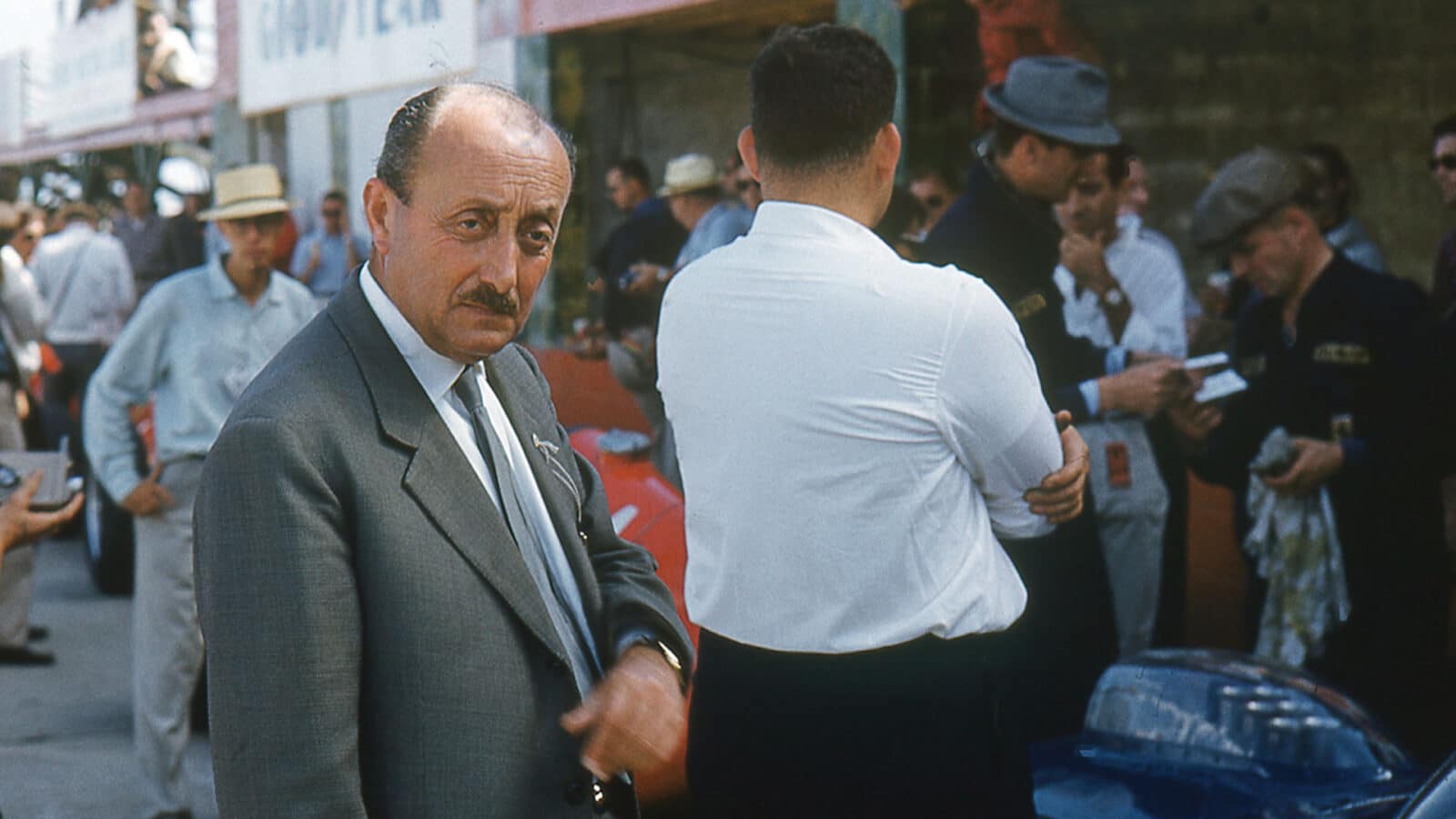The house that Enzo didn’t build: how Lewis Hamilton paid tribute to Ferrari’s early days
With all eyes on Ferrari’s big-bucks arrival, Doug Nye recalls the unpaid ‘Mino’ Amorotti – who worked for the love of the Scuderia

A dog’s life: the self-financed ‘Sleepy Spaniel’ Amorotti was able to speak to Enzo frankly
GPL
There was perhaps more than a hint of wannabe reality television ‘star’ about Lewis Hamilton’s tailored style in his first on-site public appearance with Ferrari on January 20. Immaculately suited, dark overcoat draped somewhat sinisterly over his shoulders, he certainly looked the part. Quite of what, perhaps, remains debatable.
But motor racing prowess depends upon so much more than superficial appearance. As the eight-time – so far as I am concerned – World Champion driver makes his Ferrari debut, I instinctively wish him well.
“If Ferrari delivers technically, Leclerc will not readily move aside”
Those press photos taken in what is apparently now known as the Piazza Michael Schumacher before the former farmhouse at Fiorano will either feature in some future celebration of a great conclusion to Hamilton’s stupendous career, or in memory of a sadly disappointing swansong. Declaring a partiality, I hope it will be the former, but if Ferrari delivers technically then Charles Leclerc – who has a commanding head start in what will be his seventh season with the team – will not readily move aside and watch. That is never a born Racer’s way. But if Leclerc is one of those, then so – most emphatically – is Hamilton.
Meanwhile, applying an historical mindset to capo ’Amilton’s debut at Maranello/Fiorano triggers reflex memories of another Ferrari; not company founder Enzo himself – aka ‘Il Commendatore’, ‘The Old Man’, ‘Il Grande Vecchio’ – but a long-time friend and former associate team director of his, Girolamo ‘Mino’ Ferrari Amorotti.
From a wealthy local land-owning family deeply involved in farming, Amorotti had pre-war earned a good degree in aeronautical engineering from Milan Politecnico. In wartime he was involved in Alfa Romeo aero-engine production. More significantly he was credited with having introduced Mr Ferrari to land for sale between the villages of Fiorano Modenese and Maranello, some eight miles south of Modena, when our hero was seeking a rural second home outside the city.
His choice fell upon ‘that’ farmhouse which formed the backdrop to the Hamilton pose. Amorotti also introduced Ferrari to open land on the opposite side of the main Formigine road, which was also acquired to become the out-of-town site for a fresh factory, into which – to escape Allied bombing – he then moved his wartime machine-tool business. The new-built workshops there, of course, then became Ferrari’s famous Maranello factory postwar.
From 1953 to ’60, Mino Amorotti served as a self-financing guest technical advisor on site at Ferrari’s major races. While a succession of paid Direttori Sportivi including Nello Ugolini, Eraldo Sculati and Romolo Tavoni handled the drivers, Amorotti oversaw the mechanics and technical matters on site. Because he wasn’t paid by The Old Man – always saying he did what he did simply “for the passion” of involvement – he was also free to tell Ferrari bluntly and precisely whatever he felt necessary. This was a rare privilege for any member of The Old Man’s team, and Amorotti did it fearlessly and thoroughly. Always dark-suited, Amorotti had a deeply lined habitually glum face which, with both his eyes and eyebrows steeply sloping upwards, led American team drivers Phil Hill, Dan Gurney and Richie Ginther to christen him ‘The Sleepy Spaniel’.
Ten years after Amorotti’s departure from Ferrari, city expansion and traffic had so engulfed the Modena Aerautodromo –which was essentially an airfield with a racing circuit around its perimeter – that its future use was untenable. It was then in 1971 that Ferrari’s dedicated serpentine track laid out in former fields flanking the Fiorano farmhouse was opened. And it was there late in 1973 that Niki Lauda first test-drove a 312B3 upon his debut as a Ferrari works driver. The blunt Austrian instantly took a leaf out of Amorotti’s book by telling The Old Man to his face that the car would have no chance of success without major redesign and development. He did this through Mr Ferrari’s faithful PA-cum-interpreter Dr Franco Gozzi, who gazed at Niki in stunned horror and protested “I can’t tell him that!”. Lauda memorably insisted he did so. Gozzi complied – using less immoderate language. The Old Man bristled, but responded in effect “We’ll try what you say, but next time you test here you’d better be fast!”.
He did. And he was. Of course Mr Ferrari – 37 years dead – is now long gone. But with this modern-day Ferrari team, Lewis has so many similar precedents to match. He doesn’t have to satisfy a singular dictator. But he is expected to satisfy the aspirations of not only Ferrari’s current management, but also those of the frenziedly partisan Italian tifosi, plus those of the always unpredictably predatory Italian media. Has he been signed-on by Ferrari’s 48-year-old executive chairman, the late Gianni Agnelli’s grandson John Elkann, as a trophy acquisition?
In capability terms, is he truly still up to the challenge? We shall surely see. Perhaps then one can sympathise with the grim pose he struck for that debut photography session before the historic old farmhouse at Fiorano.
